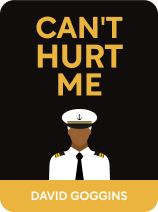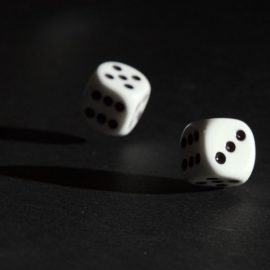

This article is an excerpt from the Shortform book guide to "Can't Hurt Me" by David Goggins. Shortform has the world's best summaries and analyses of books you should be reading.
Like this article? Sign up for a free trial here .
What is David Goggins’ pull up record? Why did Goggins pursue this record?
David Goggins’ pull up record is 4,030 pull ups. But Goggins didn’t always hold the record; he decided to pursue it while taking a break from 100-mile race training.
Read more about David Goggins’ pull up record and how he achieved this goal.
David Goggins: Pull Up Record Is Made to Be Broken
Goggins wasn’t content to be known just for his Navy career and ultra races. Though he needed to take a break from ultra races due to dizzy spells, he realized that he did a lot of pull-ups as part of his regular training and wondered if he could break the world record for number of pull-ups in 24 hours. The record at the time was 4,020 pull-ups, which was held by Stephen Hyland. While doing pull-ups, he could take breaks and avoid the dizziness brought on by running. David Goggins’ pull up goal wasn’t to break the record right away, but that quickly took over.
Goggins reached out to the same organization he raised money for through his ultra running to ask if they’d accept fundraising from this event. Then, a friend of his booked him a spot to attempt to break the record on The Today Show.
To train for this appearance, he ramped up his pull-up regimen—400 pull-ups each weekday and 1,500 on weekend days.
First Attempt: The Today Show
When the big day came, Goggins immediately encountered several issues:
- The television studio was filled with bright lights, and interacting with the hosts and people passing by the studio required him to be more social than he preferred.
- The bar had more give than he was used to. This forced him to use more power with each pull-up, wearing him out faster than he expected.
- He wasn’t getting enough calories. Though he was sipping a carbohydrate drink all day, he wasn’t getting any protein. He ended up ordering a cheeseburger, but he still wasn’t able to avoid severe fatigue.
After doing 2,500 pull-ups, he decided to quit. Though he felt disappointed to have failed in front of a large audience, he realized he had a chance of succeeding if he tweaked his approach and tried again.
He evaluated what went well and what needed to be improved. For his second attempt, he decided to use a venue that was more private, eat better so his muscles didn’t get fatigued as readily, use gymnastic chalk and tape, and get a sturdier pull-up bar. David Goggins’ pull up record ambitions continued.
Second Attempt: CrossFit Gym
Goggins found a CrossFit gym near his mother’s home in Nashville that offered a sturdier bar and the more private environment he wanted. Gym members could help support him and cheer him on during the event, but it would be more private than the television studio.
During his second attempt, he encountered yet more difficulties.
- Though the bar was sturdier, it came at a cost: Goggins started developing blisters on his hands that he couldn’t soothe with taping or ointments. Though he was wearing gloves, the repetitive movement of the pull-ups cut his palms down to the nerve layer of his skin, making each movement extremely painful.
- His muscles started spasming and a nurse who was monitoring him said he was suffering from rhabdomyolysis—when a certain group of muscles is so overworked that they start breaking down and the kidneys have trouble filtering out the protein. The nurse warned that it could be deadly, but he decided to proceed with caution.
After about 3,200 pull-ups, the pain was overwhelming and he wasn’t doing pull-ups fast enough to break the record. He decided to quit. However, he knew he wanted to attempt it again, so he took stock of what worked and what needed to change. For example, David Goggins’ pull up strategy could improve by:
- He liked doing it in the CrossFit gym, but having gym members in the room was still distracting. When he attempted it again, he wanted half the people from before.
- The sturdier bar helped him get 700 more pull-ups than his first attempt, though it hurt his hands in the process. He decided to ask a mattress company to custom design foam pads for his hands for his next attempt—with approval from Guinness World Records.
Third Attempt: CrossFit Gym
Finally, on the third attempt, David Goggins’ pull up strategy worked. During his third attempt, Goggins was still dealing with hand issues and rhabdomyolysis, as well as a new challenge: feeling like he was going to fail again.
Instead of turning his doubt inward on himself and hurting his performance further, he focused his energy toward the current record holder, Stephen Hyland. He pretended that Hyland was an evil genius that only he could defeat by taking his title, which gave him the energy to push on. He got past the record of 4,020 pull-ups, completing 4,030.

———End of Preview———
Like what you just read? Read the rest of the world's best book summary and analysis of David Goggins's "Can't Hurt Me" at Shortform .
Here's what you'll find in our full Can't Hurt Me summary :
- What a Navy SEAL says about pushing yourself to achieve greatness
- How to put in more effort to realize your potential
- The 10 challenges you can take on to reach your goals






